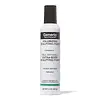What's inside
What's inside
 Benefits
Benefits

 Concerns
Concerns

 Ingredients Side-by-side
Ingredients Side-by-side

Water
Skin ConditioningButane
Vp/Va Copolymer
Propane
Polyquaternium-11
Parfum
MaskingPPG-5-Ceteth-20
EmulsifyingPEG-12 Dimethicone
Skin ConditioningSteareth-21
CleansingDipropylene Glycol
HumectantDiazolidinyl Urea
PreservativePropylene Glycol
HumectantCocamidopropyl Hydroxysultaine
CleansingPentaerythrityl Tetracaprylate/Tetracaprate
EmollientCocamidopropyl Betaine
CleansingBisamino PEG/PPG-41/3 Aminoethyl Pg-Propyl Dimethicone
Butylene Glycol
HumectantHedychium Coronarium Root Extract
MaskingTetrasodium EDTA
Phenoxyethanol
PreservativeAlpha-Isomethyl Ionone
PerfumingBenzyl Benzoate
AntimicrobialHexyl Cinnamal
PerfumingLinalool
PerfumingWater, Butane, Vp/Va Copolymer, Propane, Polyquaternium-11, Parfum, PPG-5-Ceteth-20, PEG-12 Dimethicone, Steareth-21, Dipropylene Glycol, Diazolidinyl Urea, Propylene Glycol, Cocamidopropyl Hydroxysultaine, Pentaerythrityl Tetracaprylate/Tetracaprate, Cocamidopropyl Betaine, Bisamino PEG/PPG-41/3 Aminoethyl Pg-Propyl Dimethicone, Butylene Glycol, Hedychium Coronarium Root Extract, Tetrasodium EDTA, Phenoxyethanol, Alpha-Isomethyl Ionone, Benzyl Benzoate, Hexyl Cinnamal, Linalool
Water
Skin ConditioningButane
Hydrofluorocarbon 152a
Vp/Va Copolymer
Polyquaternium-46
Hypnea Musciformis Extract
Skin ProtectingPalmaria Palmata Extract
Skin ProtectingLaminaria Saccharina Extract
Skin ProtectingChondrus Crispus Extract
Skin ConditioningAscophyllum Nodosum Extract
Skin ConditioningMacrocystis Pyrifera Extract
Skin ConditioningSargassum Filipendula Extract
Skin ProtectingEnteromorpha Compressa Extract
Skin ProtectingLaminaria Digitata Extract
Skin ProtectingUndaria Pinnatifida Extract
Skin ConditioningHimanthalia Elongata Extract
Skin ProtectingGelidiella Acerosa Extract
Skin ProtectingPelvetia Canaliculata Extract
Skin ProtectingHydrolyzed Rhodophyceae Extract
Steareth-21
CleansingPEG/PPG-17/18 Dimethicone
EmulsifyingPPG-5-Ceteth-20
EmulsifyingCocamidopropyl Hydroxysultaine
CleansingDiazolidinyl Urea
PreservativePhenoxyethanol
PreservativePhenylpropanol
MaskingPropanediol
SolventCaprylyl Glycol
EmollientGlycerin
HumectantBenzoic Acid
MaskingSorbic Acid
PreservativeBenzyl Salicylate
PerfumingHydroxycitronellal
PerfumingLinalool
PerfumingButylphenyl Methylpropional
PerfumingParfum
MaskingWater, Butane, Hydrofluorocarbon 152a, Vp/Va Copolymer, Polyquaternium-46, Hypnea Musciformis Extract, Palmaria Palmata Extract, Laminaria Saccharina Extract, Chondrus Crispus Extract, Ascophyllum Nodosum Extract, Macrocystis Pyrifera Extract, Sargassum Filipendula Extract, Enteromorpha Compressa Extract, Laminaria Digitata Extract, Undaria Pinnatifida Extract, Himanthalia Elongata Extract, Gelidiella Acerosa Extract, Pelvetia Canaliculata Extract, Hydrolyzed Rhodophyceae Extract, Steareth-21, PEG/PPG-17/18 Dimethicone, PPG-5-Ceteth-20, Cocamidopropyl Hydroxysultaine, Diazolidinyl Urea, Phenoxyethanol, Phenylpropanol, Propanediol, Caprylyl Glycol, Glycerin, Benzoic Acid, Sorbic Acid, Benzyl Salicylate, Hydroxycitronellal, Linalool, Butylphenyl Methylpropional, Parfum
Ingredients Explained
These ingredients are found in both products.
Ingredients higher up in an ingredient list are typically present in a larger amount.
Butane is a gas derived from petroleum and natural gas. It is used as an aerosol propellant.
Cocamidopropyl Hydroxysultaine is a synthetic cleansing agent, though it is derived from coconut oil.
It is used to enhance the texture of products by boosting lather and thickening the texture. As a cleanser, Cocamidopropyl Hydroxysultaine is mild.
Diazolidinyl Urea is an antimicrobial preservative. It is commonly used to prevent bacterial, yeast, and mold growth.
Diazolidinyl Urea slowly breaks down into formaldehyde, an effective microbe killer but also a known allergen/carcinogen.
Some people who are allergic to imidazolidinyl urea also react to diazolidinyl urea. It ranked as the 14th most common allergen in patch tests from 2005–06.
Safety reviews show that at concentrations under 0.5%, the formaldehyde released remains below the accepted safety limit, making it considered safe for cosmetic use.
Ultimately, its safety depends on individual skin sensitivity and personal comfort with formaldehyde-releasing preservatives.
Learn more about Diazolidinyl UreaLinalool is a fragrance and helps add scent to products. It's derived from common plants such as cinnamon, mint, citrus, and lavender.
Like Limonene, this ingredient oxidizes when exposed to air. Oxidized linalool can cause allergies and skin sensitivity.
This ingredient has a scent that is floral, spicy tropical, and citrus-like.
Learn more about LinaloolParfum is a catch-all term for an ingredient or more that is used to give a scent to products.
Also called "fragrance", this ingredient can be a blend of hundreds of chemicals or plant oils. This means every product with "fragrance" or "parfum" in the ingredients list is a different mixture.
For instance, Habanolide is a proprietary trade name for a specific aroma chemical. When used as a fragrance ingredient in cosmetics, most aroma chemicals fall under the broad labeling category of “FRAGRANCE” or “PARFUM” according to EU and US regulations.
The term 'parfum' or 'fragrance' is not regulated in many countries. In many cases, it is up to the brand to define this term.
For instance, many brands choose to label themselves as "fragrance-free" because they are not using synthetic fragrances. However, their products may still contain ingredients such as essential oils that are considered a fragrance by INCI standards.
One example is Calendula flower extract. Calendula is an essential oil that still imparts a scent or 'fragrance'.
Depending on the blend, the ingredients in the mixture can cause allergies and sensitivities on the skin. Some ingredients that are known EU allergens include linalool and citronellol.
Parfum can also be used to mask or cover an unpleasant scent.
The bottom line is: not all fragrances/parfum/ingredients are created equally. If you are worried about fragrances, we recommend taking a closer look at an ingredient. And of course, we always recommend speaking with a professional.
Learn more about ParfumPhenoxyethanol is a preservative that has germicide, antimicrobial, and aromatic properties. Studies show that phenoxyethanol can prevent microbial growth. By itself, it has a scent that is similar to that of a rose.
It's often used in formulations along with Caprylyl Glycol to preserve the shelf life of products.
We don't have a description for PPG-5-Ceteth-20 yet.
We don't have a description for Steareth-21 yet.
We don't have a description for Vp/Va Copolymer yet.
Water. It's the most common cosmetic ingredient of all. You'll usually see it at the top of ingredient lists, meaning that it makes up the largest part of the product.
So why is it so popular? Water most often acts as a solvent - this means that it helps dissolve other ingredients into the formulation.
You'll also recognize water as that liquid we all need to stay alive. If you see this, drink a glass of water. Stay hydrated!
Learn more about Water